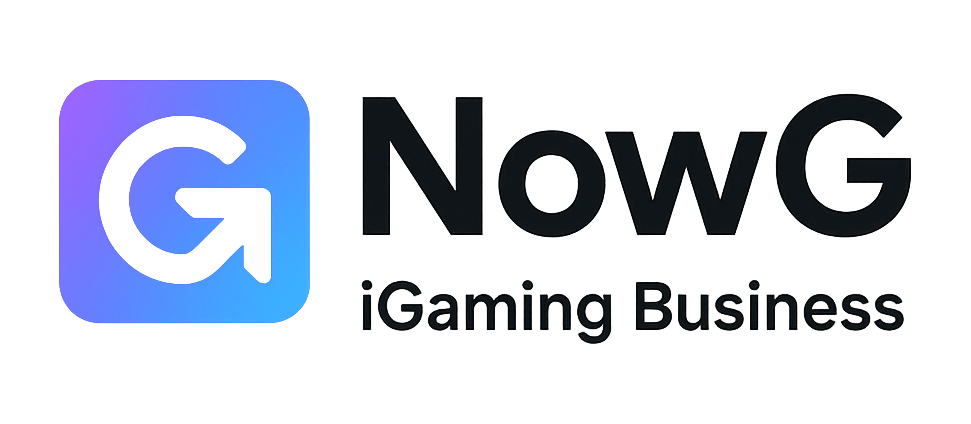Last Updated on November 19, 2025 by Caesar Fikson
AI isn’t a side quest anymore—it’s the operating system behind modern casino decisions. “Track” doesn’t mean spy; it means stitching together consented signals from loyalty cards, apps, on-property sensors, tables, slots, and payments so you can predict behavior, reduce harm, and serve the right experience at the right moment.
At NOWG, I see two types of operators in 2026: those still analyzing last week’s CSVs, and those running real-time models with human guardrails. Guess which ones win weekends.
The 2026 data reality: where signals come from
Before we get into the ten AI applications, map the plumbing. If your telemetry is thin or stale, every model’s just a fancy guess.
| Source | Signals | Typical cadence | Where it’s used | Risks to manage |
|---|---|---|---|---|
| Loyalty & CRM | Player ID, tier, preferences, lifetime value, contact permissions | Real time to hourly | Personalization, host tools, RG monitoring | Consent drift, stale contact flags |
| Cashier & payments | Deposits, withdrawals, chargebacks, rails, fees | Real time | Fraud, AML, affordability checks | False positives, payout delays |
| Slot floor | Game ID, denom, session start/stop, bet size, RTP, cabinet health | Seconds to minutes | Churn risk, predictive maintenance, content curation | Misattribution when cards aren’t used |
| Table games | Buy-ins, ratings, hands per hour, chip movement, dealer ID | Minutes to hours | Advantage play detection, comp accuracy | Subjective ratings if manual |
| Sportsbook | Bet slips, odds, edit-bet, cash-out, market exposure | Real time | Risk pricing, bonus governance | Liability spikes on live events |
| Mobile app & web | Page views, deep links, push opens, wallet events | Real time | Next best action, onboarding | Privacy and cross-device ID |
| On-property RTLS | Wi-Fi/BLE/UWB presence, dwell, pathing, queue length | Seconds | Queue optimization, staffing, host dispatch | Overreach without clear notices |
| Computer vision | Entry counts, occupancy, line length, age estimation, restricted area breaches | 1–5 seconds | Security, service levels, RG interventions | Accuracy, signage, opt-outs |
| Customer service | Chats, emails, transcripts, sentiment | Real time to hourly | Complaint prevention, churn prediction | Sensitive data handling |
| Third-party data | Weather, events, flights, public holidays | Hourly to daily | Demand forecasting, yield management | Overfitting to one-off events |
If this matrix feels chaotic, good—you’re seeing the real system. AI’s job is to make it legible.
1. Identity resolution and real-time location awareness
What it is
Unifies online and on-property identities, then adds privacy-compliant real-time location signals so you know who is where, with what intent, and how likely they are to convert in the next 30 minutes.
Signals
Loyalty swipes, app beacons, Wi-Fi associations, kiosk logins, cashier events, table ratings, slot card-ins, entry cameras with consented face templates where permitted.
Models & methods
Probabilistic entity resolution, graph-based identity stitching, dwell-time clustering, path sequence models, micro-segmentation based on recency and proximity.
Use cases
- Dispatch a host when a high-tier player passes VIP but doesn’t enter.
- Trigger a free-play micro-offer when a frequent slot player lingers near new cabinets.
- Proactively staff a craps pit when footfall exceeds a threshold.
AI tools often used
Feature stores for identity keys, graph databases for entity links, streaming engines for proximity rules, vector search for “people like this here and now.”
KPIs
Time-to-service for VIPs, bounce rate near key zones, incremental play captured within 60 minutes.
Guardrails
Clear signage and consent preferences in the app; disable face matching where not permitted; purge short-lived location identifiers after use.
2. Predictive LTV, churn, and session-stop forecasting
What it is
Forecasts lifetime value and near-term churn, then predicts when a session is about to end so you can intervene responsibly.
Signals
Bet velocity, stake volatility, recent losses vs bankroll, time of day, number of machine moves, queue frustration, customer service tone.
Models & methods
Gradient-boosted trees for LTV, survival analysis for churn timing, sequence models for stop-intent, elastic net for interpretable drivers. SHAP values to explain why a prediction fired.
Use cases
- Send a “soft landing” perk when a high-value player approaches session end, not mid-tilt.
- Trigger human outreach for VIPs showing long-horizon churn patterns.
- Adjust day-two offers based on day-one survivorship curves in a new state.
AI tools often used
AutoML for tabular predictions, MLOps with model registry, explainability libraries, cohort dashboards wired to the warehouse.
KPIs
Lift in week-four retention, incrementality in ARPU, reduction in “rage quit” complaints.
Guardrails
Never nudge continued play for at-risk customers; route predictions into RG workflows when triggers overlap.
3. Next best action and dynamic comping
What it is
Real-time decisioning that chooses the best offer or action per player and context: a comp, an experience, a mission, or no message at all.
Signals
Contextual data from identity layer, current exposure on sportsbook, table wait times, seat availability, offer fatigue, past redemption patterns.
Models & methods
Contextual bandits for exploration vs exploitation, constrained reinforcement learning to respect liability ceilings, uplift modeling to avoid rewarding people who would play anyway.
Use cases
- Offer two seats at the high-limit lounge instead of yet another free-play token.
- Present a micro-mission to convert sportsbook traffic into a few spins on a launch title.
- Swap cash comps for experiences for customers who value status over cash.
AI tools often used
Decisioning engines with policy constraints, real-time rules with back-testing, experimentation platforms for uplift tests.
KPIs
Incremental profit per offer, offer take-rate without long-term cannibalization, liability per cohort.
Guardrails
Set cohort-level exposure caps; hard-code “do not offer” states for RG flags; run evergreen holdouts to measure true incrementality.
4. Responsible gaming and early-harm detection
What it is
Models that detect early markers of harm and escalate to human review or automatically enforce limits and timeouts.
Signals
Chasing behavior, session frequency spikes, deposit frequency/amount changes, nighttime pattern shifts, self-reported stress, support tickets, friends-and-family flags.
Models & methods
Anomaly detection on time series, supervised classification with human-labeled cases, risk scoring with conservative thresholds. Continuous re-training with governance.
Use cases
- Send reality checks and cool-off suggestions when risk climbs.
- Auto-apply deposit or time limits from a player’s self-selected options.
- Route to a specialist RG team with a clear case summary and next steps.
AI tools often used
Risk scoring pipelines, human-in-the-loop review workbenches, policy logic that overrides marketing when RG triggers fire.
KPIs
Time from risk onset to intervention, adherence to limits, reductions in escalations, customer satisfaction post-intervention.
Guardrails
Err on the side of well-being. Document decisions. Give players simple controls to set, change, and remove limits with appropriate cool-offs.
5. Fraud, collusion, and AML anomaly detection
What it is
Finds patterns that indicate chip dumping, bonus abuse, identity farms, money-mule networks, or table collusion.
Signals
Device clusters, payment rails, velocity on deposits/withdrawals, correlated betting, table seat patterns, referral graphs, chargebacks, document similarities.
Models & methods
Graph embeddings for network risk, sequence anomaly detectors, rules for known typologies augmented by ML, semi-supervised learning when labels are scarce.
Use cases
- Flag referral rings converting promos into arbitrage cash-outs.
- Detect suspicious table seating rotations tied to off-property coordination.
- Triage AML alerts with model-derived risk ranks so humans spend time where it matters.
AI tools often used
Graph databases, anomaly frameworks, case management with feedback loops, device fingerprinting services.
KPIs
Fraud caught before payout, false positive rate, investigator hours per valid case, chargeback rate.
Guardrails
Explainability is non-negotiable. Keep an appeal process. Avoid proxies like nationality; focus on behavior and networks.
6. Computer vision on the floor: occupancy, service, and compliance
What it is
Vision models observing public spaces to understand occupancy, queues, table utilization, age estimation at entrances where allowed, restricted-area breaches, and service gaps.
Signals
Overhead and doorway cameras, zone counters, line length, speed of flow, dwell by zone.
Models & methods
Object detection and tracking, re-identification within a session, pose estimation for staff attention, privacy blur for faces where you don’t need identity.
Use cases
- Add dealers when blackjack tables show persistent queue length.
- Dispatch F&B to zones with long dwell and low service touches.
- Enforce restricted-area rules and shorten entry lines.
AI tools often used
Edge inference for sub-second latency, model compression/quantization, privacy filters, event buses to service teams.
KPIs
Average queue time, table occupancy balance, time-to-service in hot zones, compliance incidents prevented.
Guardrails
Prominent notices, pixel-level masking where identity isn’t required, automatic deletion schedules, and audits for bias/accuracy.
7. Yield management and dynamic comp pricing
What it is
Applies revenue-management math to comp decisions, hotel inventory, dining, shows, and experiences—pricing rewards based on expected value rather than fixed menus.
Signals
LTV forecasts, current bankroll, hotel occupancy, event calendars, cross-sell propensity, opportunity cost of inventory.
Models & methods
Constrained optimization, reinforcement learning with guardrails, price elasticity estimation, scarce inventory allocation.
Use cases
- Trade a room-night comp for a late-check-out + dining package that yields higher total wallet.
- Offer seat upgrades or “skip-the-line” passes to players with high EV this weekend.
- Remove under-performing comps that drive cost without incremental play.
AI tools often used
Solvers for allocation, policy engines for eligibility, dynamic pricing modules integrated with PMS and dining systems.
KPIs
Comp cost per incremental dollar, occupancy at target ADR, attachment rates for experiences.
Guardrails
Transparent terms, fairness across cohorts, and strict caps on total comp liability per day and per event.
8. Player journey orchestration across channels
What it is
Maps how players move from awareness to first visit to repeat behavior across app, web, property, and hosts—and changes the journey in real time.
Signals
Campaign touchpoints, app events, call center notes, footfall sequences, play sequences, offer history.
Models & methods
Markov chain attribution for path modeling, sequence clustering, causal uplift models to identify interventions that actually change outcomes.
Use cases
- Swap a generic bonus for a mission that mirrors a player’s natural behavior arc.
- Route a first-timer to a curated three-stop property tour based on their app browsing.
- Trigger a “welcome back” path if someone returns within 72 hours of a big event.
AI tools often used
Customer journey orchestration engines, CDP+warehouse combos, online experiment platforms with holdouts.
KPIs
Time to second visit, cross-product penetration, reduction in dead-end paths, test-versus-control deltas.
Guardrails
Avoid dark patterns. Give opt-outs for personalization and respect them everywhere.
9. Content and game portfolio optimization
What it is
Decides which slot titles, table side bets, or live-dealer variants to feature for each micro-segment and time window.
Signals
Title-level profitability, novelty fatigue curves, volatility preferences, bet size distributions, session outcomes, content discovery pathways.
Models & methods
Contextual bandits for placement, clustering for taste profiles, Bayesian updating for small-sample titles, multi-armed bandits for lobby layout.
Use cases
- Rotate in medium-volatility titles for a segment that churns on extremes.
- Feature a new live-dealer variant only to players whose past behavior indicates tolerance for higher variance.
- Reorder lobbies per segment and time of day.
AI tools often used
Real-time content APIs, layout optimizers, title telemetry collectors, simulation tools to stress-test portfolios.
KPIs
Game discovery rate, sustainable bet frequency, title survivorship after month one, portfolio margin stability.
Guardrails
Respect RG flags in recommendations. Don’t push high-variance content to at-risk players.
10. Predictive maintenance and AIOps for the floor
What it is
Predicts slot and table hardware failures, signage outages, kiosk issues, and performance regressions before they hit guests.
Signals
Cabinet telemetry, error logs, temperature and power fluctuations, reboot frequency, network jitter, firmware versions.
Models & methods
Time-series forecasting, anomaly detection, classification on failure signatures, root-cause analysis with knowledge graphs.
Use cases
- Schedule maintenance during low-traffic windows for cabinets trending toward failure.
- Detect signage devices that will blink out before a major event.
- Auto-route tickets with confidence scores to the right tech.
AI tools often used
Edge collectors, observability stacks, automated runbooks, alert deduplication and enrichment.
KPIs
Mean time to repair, incidents avoided, floor uptime during peak hours, signage error minutes.
Guardrails
Don’t flood ops with low-value alerts. Measure noisy model behavior and tune aggressively.
Quick comparison: the ten ways at a glance
| AI capability | Primary goal | Main signals | Typical model family | Must-have guardrails |
|---|---|---|---|---|
| Identity & RTLS | Know who’s where now | Loyalty, app, Wi-Fi/BLE | Graph + clustering | Consent, retention limits |
| LTV & churn | Keep good players longer | Play sequences, losses, service | GBMs, survival models | RG overrides |
| Next best action | Right offer, right time | Context, inventory, fatigue | Contextual bandits, RL | Liability caps |
| RG early-harm | Reduce harm early | Velocity, night patterns, tickets | Anomaly + supervised | Human review, cool-offs |
| Fraud & AML | Stop bad actors | Device, payments, networks | Graph embeddings | Explainable decisions |
| Vision on floor | Service and compliance | Cameras, counters | Detection + tracking | Signage, privacy filters |
| Yield & comps | Maximize value of perks | LTV, inventory, events | Optimization + RL | Fairness, caps |
| Journey orchestration | Remove friction | Paths, offers, dwell | Markov + uplift | No dark patterns |
| Content optimization | Match tastes to titles | Title telemetry, volatility | Bandits, clustering | RG-aware placement |
| AIOps/maintenance | Keep things running | Telemetry, logs | Forecasting + anomaly | Noise control |
Practical AI toolchain in 2026
You don’t need every shiny thing. You need a few reliable pieces that talk to each other.
- Streaming backbone to capture events in real time
- Feature store for consistent, low-latency features across training and inference
- Model training for tabular, sequence, graph, and vision workloads
- Inference layer at both edge and cloud for sub-second and batch decisions
- Experimentation to prove incrementality with holdouts and guardrails
- Monitoring for drift, outliers, latency, and fairness
- Warehouse & lake to store raw facts and serve BI
- Orchestration so data engineers and data scientists can ship weekly without panic
If a vendor can’t show you how each piece plugs in, you’re buying a brochure, not a platform.
Responsible AI in a casino context
- Consent and notices should be plain language, not legal riddles.
- Data minimization: collect only what you’ll use; set deletion clocks.
- Explainability: produce human-readable reasons for high-impact decisions such as RG flags or denied payouts.
- Bias testing: check models for disparate error rates across protected groups.
- Human-in-the-loop: put people in charge where stakes are high.
- Incident playbooks: decide today how you’ll respond to false positives, data leaks, or model failures.
- Audit trails: log what the model saw, decided, and why. If you can’t replay it, you can’t defend it.
Use cases with deeper context
| Use case | The play | Required AI | What can go wrong | How to measure real impact |
|---|---|---|---|---|
| VIP recovery before churn | Identify VIPs trending down and offer a bespoke experience, not raw cash | Survival models, NBA engine | Incentivizing already-committed play; moral hazard | VIP churn rate, host time per saved account, net margin after comps |
| Queue-aware staffing | Add dealers or F&B where queues spike | Vision counters, scheduling optimizers | Overreacting to brief spikes; staff fatigue | Average queue time, service touches per guest, NPS in hot zones |
| Mission-based cross-sell | Convert sportsbook traffic to a few spins on a curated slot | Contextual bandits, content optimizer | Pushing variance to risk-sensitive users | Cross-product penetration, sustainable frequency, RG escalations |
| Early-harm cool-offs | Intervene before harmful play patterns escalate | Anomaly detectors, RG policies | False alarms that frustrate healthy players | Time from signal to cool-off, follow-through on limits, complaint rate |
| Promo-abuse prevention | Identify rings gaming welcome offers | Graph analytics, device intelligence | Overblocking edge cases; PR blowback | Fraud caught before payout, false positive ratio, hours per valid case |
| Dynamic comp pricing | Trade cash comps for experiences with better EV | Optimization with guardrails | Perceived unfairness if opaque | Comp cost per incremental dollar, repeat uptake of experiences |
| Real-time host copilot | Surface talking points and next actions to hosts | LLM-based retrieval, uplift predictions | Hallucinated advice; privacy leaks | Host conversion uplift, CSAT, error reports |
| Slot content rotation | Re-order lobbies by micro-segment and time | Bandits, taste clustering | Whiplash from too-frequent changes | Game discovery rate, dwell stability, margin variance |
| Maintenance before meltdown | Fix failing cabinets pre-event | Time-series + anomaly | Maintenance during wrong window | MTTR, failures prevented, peak uptime |
| Journey repair | Identify dead-end paths in onboarding | Markov models, causal testing | Misattributing wins to the wrong interventions | Time to second visit, path completion rate, holdout deltas |
100-day roadmap to get from talk to traction
Days 1–10
Define two “north-star” problems: one revenue (next best action) and one safety (RG early-harm). Inventory signals. Draft a governance charter. Create a shared glossary so product, ops, and data speak the same language.
Days 11–30
Wire real-time events from slots, tables, app, and cashier. Stand up a feature store. Build baseline LTV and churn models with simple features. Choose one zone for a vision pilot to count occupancy and queues.
Days 31–45
Ship the first NBA policy with strict exposure caps. Launch a small RG classifier with human review and only two actions: gentle nudge, cool-off suggestion. Start a maintenance model on a subset of cabinets.
Days 46–60
Add uplift testing to NBA. Bring in a graph risk model for basic promo-ring detection. Turn on host copilot summaries sourced from CRM and recent play, with clear disclaimers.
Days 61–80
Expand the vision pilot to two more zones; connect staffing schedules to predicted queues. Start a content rotation test in one lobby section with a 10 percent holdout.
Days 81–100
Publish the first quarterly AI report: wins, misses, drift, fairness checks, incidents, and planned fixes. Freeze what works. Kill what doesn’t. Plan the next two models, not the next ten.
RFP checklist you can paste into procurement
- Data access: real-time events, hourly raw exports, schema versioning
- Identity: cross-device and on-property identity resolution with consent taxonomy
- Decisioning: policy constraints, exposure caps, audit logs, rollback in one click
- RG: model templates, thresholds, human review queue, full overrides over marketing
- Fraud/AML: graph analytics, case tooling, explainability, appeal workflow
- Vision: on-edge anonymization, accuracy reports, deletion schedules
- MLOps: model registry, canary deploys, drift and fairness monitoring
- Security: encryption, key management, role-based access, incident response times
- Support: time-to-resolution SLAs, named TAM, quarterly architecture reviews
- Exit: data portability, playbooks for decommissioning, IP ownership spelled out
Common pitfalls and how to avoid them
- Rewarding inevitable behavior: use uplift models and holdouts; stop paying people to do what they were going to do anyway.
- Model sprawl: too many narrow models, no shared features. Consolidate and reuse.
- RG bolted on: integrate RG signals into every decision surface. Safety is not a separate app.
- Opaque comps: if hosts can’t explain comp logic, you’ll get perceived unfairness. Give them transparent rules plus discretion.
- Edge-only or cloud-only dogma: mix both; use edge for latency and cloud for depth.
- One-time tuning: sports seasons, weather, and tax changes shift behavior. Expect re-tuning quarterly.
The bigger picture
AI in 2026 isn’t about squeezing the last drop from a session. It’s about designing a predictable, responsible system where great experiences are the default and harm gets caught early. The tech is powerful—sometimes uncomfortably so. The operators who win use it with taste: enough personalization to feel seen, enough restraint to be trusted.
Have you looked at your last six months of “wins” and asked how many were inevitable, how many were incremental, and how many were harmful? That simple split tells you whether your AI is working—or just busy.
If you want a neutral way to model next-best action economics, comp liability, and RG thresholds before you deploy anything, try NOWG’s free online tools for casinos. They’ll help you pressure-test ideas before they touch the floor.




